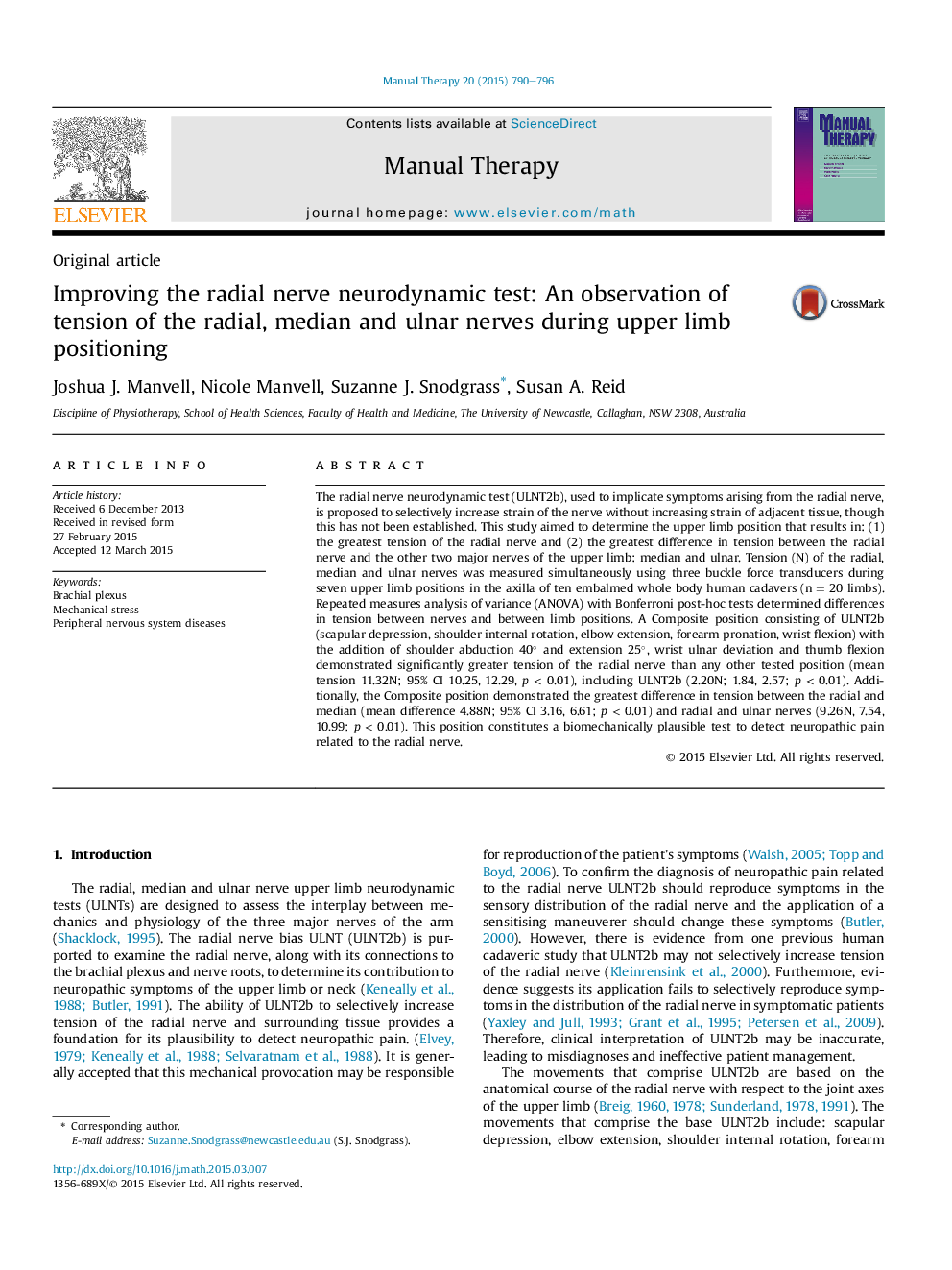| کد مقاله | کد نشریه | سال انتشار | مقاله انگلیسی | نسخه تمام متن |
|---|---|---|---|---|
| 2624754 | 1563098 | 2015 | 7 صفحه PDF | دانلود رایگان |
• Nerve tension during upper limb positions was measured in cadavers.
• ULNT2b + 5 sensitizing maneuvers (Composite position) demonstrated greatest tension.
• Composite position demonstrated greatest tension difference between upper limb nerves.
• Composite position is biomechanically plausible for detecting radial nerve symptoms.
The radial nerve neurodynamic test (ULNT2b), used to implicate symptoms arising from the radial nerve, is proposed to selectively increase strain of the nerve without increasing strain of adjacent tissue, though this has not been established. This study aimed to determine the upper limb position that results in: (1) the greatest tension of the radial nerve and (2) the greatest difference in tension between the radial nerve and the other two major nerves of the upper limb: median and ulnar. Tension (N) of the radial, median and ulnar nerves was measured simultaneously using three buckle force transducers during seven upper limb positions in the axilla of ten embalmed whole body human cadavers (n = 20 limbs). Repeated measures analysis of variance (ANOVA) with Bonferroni post-hoc tests determined differences in tension between nerves and between limb positions. A Composite position consisting of ULNT2b (scapular depression, shoulder internal rotation, elbow extension, forearm pronation, wrist flexion) with the addition of shoulder abduction 40° and extension 25°, wrist ulnar deviation and thumb flexion demonstrated significantly greater tension of the radial nerve than any other tested position (mean tension 11.32N; 95% CI 10.25, 12.29, p < 0.01), including ULNT2b (2.20N; 1.84, 2.57; p < 0.01). Additionally, the Composite position demonstrated the greatest difference in tension between the radial and median (mean difference 4.88N; 95% CI 3.16, 6.61; p < 0.01) and radial and ulnar nerves (9.26N, 7.54, 10.99; p < 0.01). This position constitutes a biomechanically plausible test to detect neuropathic pain related to the radial nerve.
Journal: Manual Therapy - Volume 20, Issue 6, December 2015, Pages 790–796
